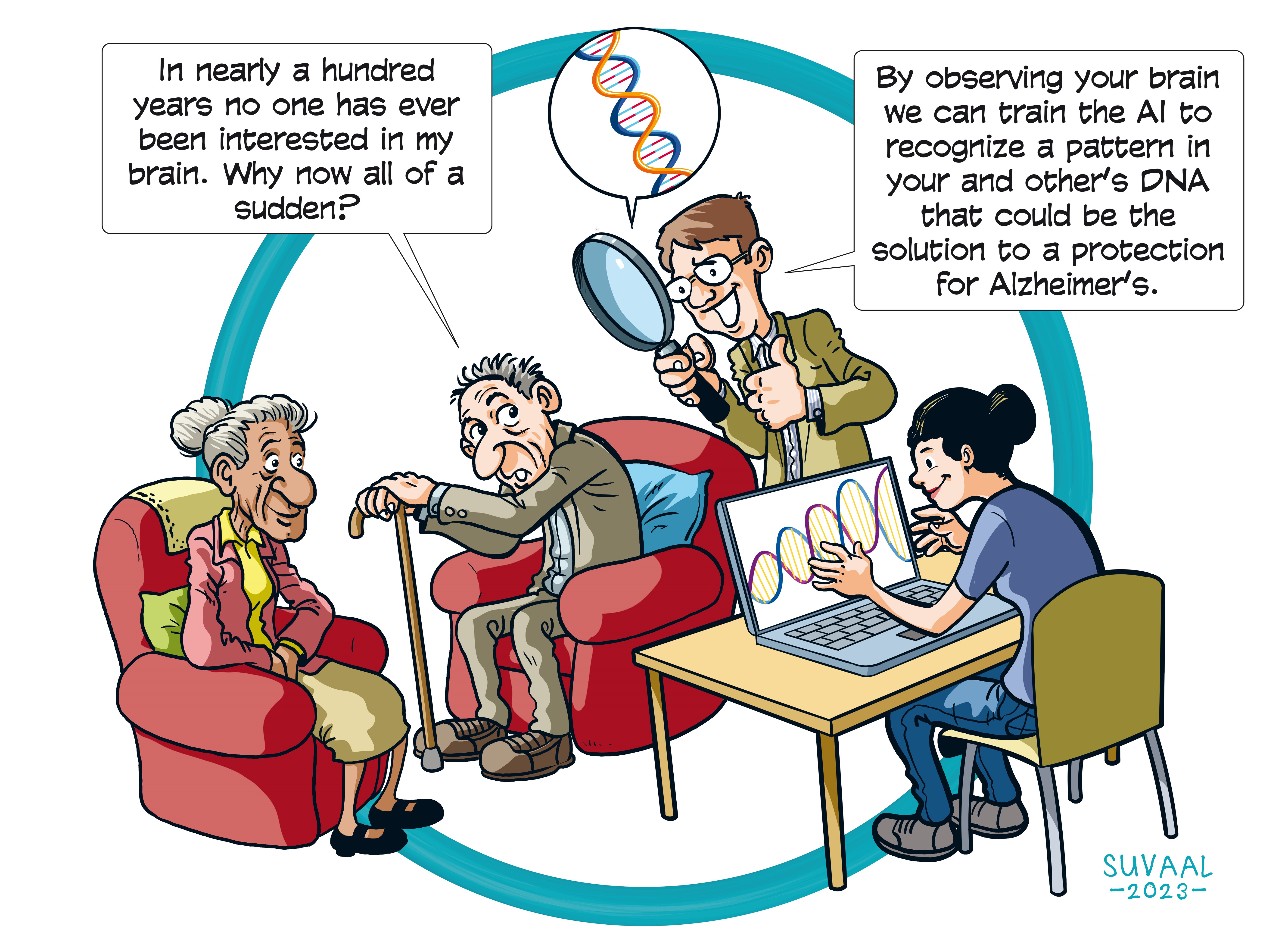Ai for understanding Alzheimer’s disease
Research Themes: Software Technology & Intellligent Systems, Life Science & Health


A TRL is a measure to indicate the matureness of a developing technology. When an innovative idea is discovered it is often not directly suitable for application. Usually such novel idea is subjected to further experimentation, testing and prototyping before it can be implemented. The image below shows how to read TRL’s to categorise the innovative ideas.
Summary of the project
Little is known about how people develop Alzheimer’s disease (AD). One approach is to look at the genetic disposition of patients to see if they have a matching region in their DNA. An alternative approach is to look at the DNA of people who are a hundred years or older and have escaped Alzheimer’s: Are they protected from developing the disease in some sort of way? The researchers use machine learning to recognize patterns in the DNA that either encode for developing AD or protecting against AD. To understand which biological processes are involved the researchers also study the molecular expressions of single cells in the brain, for example to discover which cell types are affected first. Next to genetic changes the researchers also look at protein levels in brain regions; how do they differ between AD patients and healthy centenarians, and how they change over age.
What's next?
A big next challenge is to combine the different types of data and analyze them with models that take their dependencies into account. Another challenge is to further our understanding of the healthy aging component. Knowing better which factors are involved the next challenge is to build diagnostic models as well as propose druggable targets.
With or Into AI?
Both
Dr. Marcel Reinders
Dr. H. Holstege (AUMC/Alzheimer Center)
Dr. Nico Tesi (TUD)
Faculties involved
- EEMCS
